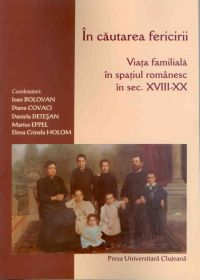Căsătorii interconfesionale și construcții identitare la sfârșitul sec. al XIX-lea și începutul sec. XX. (cazul orașului Șimleu Silvaniei)
The mixted marriages and the construction of identity at the turn of 19th century (the case on Simleul Silvaniei)
Author(s): Gheorghe SişeşteanSubject(s): History
Published by: Centrul de Studiere a Populaţiei
Keywords: inter-confessional marriage; inter-ethnic marriage; confessional endogamy/ exogamy; ethnical endogamy/ exogamy; territorial endogamy/ exogamy; territorial mobility; marital flows; construction of identity.
Summary/Abstract: Mixed marriages, either inter-confessional or interethnic, have always been and still are an everyday social reality of Transylvania. In the present study, I will examine such marriages that took place in the late nineteenth and early twentieth century, in a small town in Sălaj county, named Șimleu Silvaniei. Based on the parochial registers of marriages, I will analyze the marital strategies that led to marriages between members of three different religions: Roman Catholic, Greek Catholic and Reformed, and two ethnic groups: Romanian and Hungarian. Although an important Jewish community used to live in this town, it was not involved in the religiously acknowledged marital exchanges game. I will mention that I shall analyze the mixed marriage as an indicator of the social dynamics, involving demographic volume mutations, concerning both the ethnic and the religious plan, but I will also analyze it as an indicator of the social prestige systems of the ethnic and religious groups, and the directions of the marital flow as a marker of modernity or on the contrary, of confessional conservatism.
Journal: Romanian Journal of Population Studies
- Issue Year: 4/2010
- Issue No: Supplement
- Page Range: 111-146
- Page Count: 35
- Language: Romanian
- Content File-PDF

